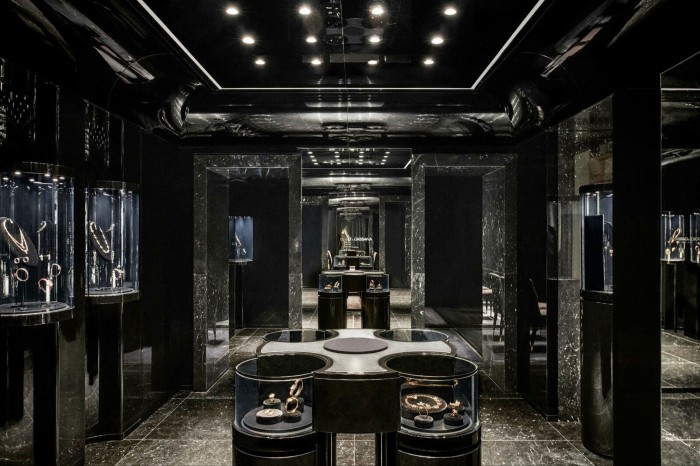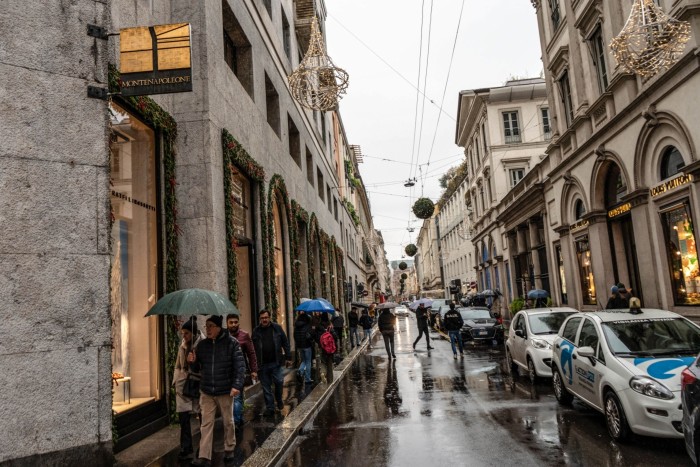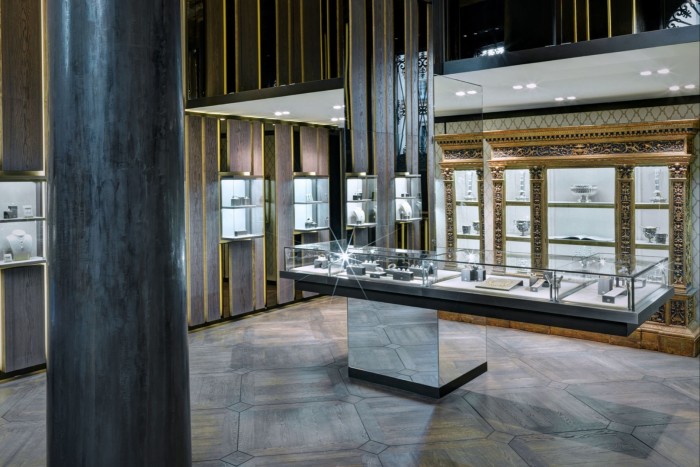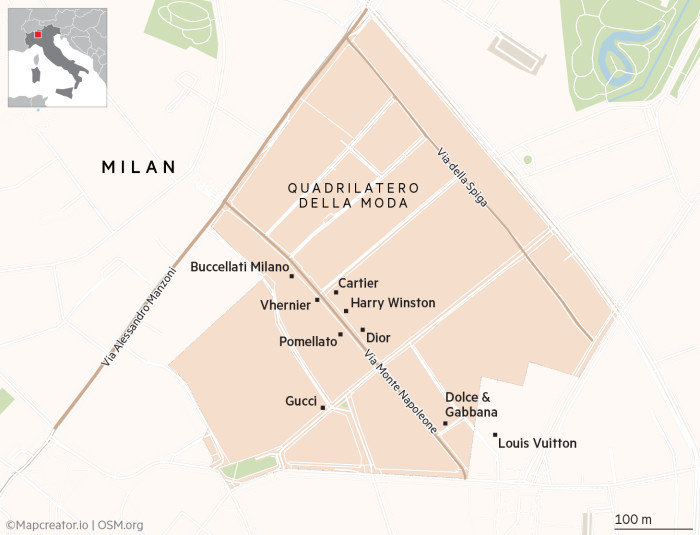Fashion and design kudos makes Milan a magnet for jewellers

Roula Khalaf, Editor of the FT, selects her favourite stories in this weekly newsletter.
Jewellers are increasingly being drawn to Milan’s fashion district. Gucci chose the northern Italian city to present its first fine jewellery collection in 2019. In 2021, Harry Winston closed its store in Rome and opened one in the district. Chopard arrived soon after. And, before all that, Buccellati, the historic Milanese brand, almost doubled the size of its store in Via Monte Napoleone, where it had been since 1967.
But the most conspicuous evidence of jewellery’s growing presence in the Quadrilatero della Moda is Dolce & Gabbana’s new boutique entirely dedicated to the segment, initially housed in the brand’s palatial store in Via Monte Napoleone — which, together with Via della Spiga, Via Manzoni and Corso Venezia, forms the district’s perimeter.
“Dolce & Gabbana jewellery and watches were already present in our fashion boutiques,” explains the group’s chief executive Alfonso Dolce. “But the idea of having a ‘temple’ entirely dedicated to our jewels, especially in Milan, where it all began for us — and [which], at the moment, remains the only one in the world — represented the right step to take to give this category the visibility and space that we believe it deserves, also on a business level.”
Dolce & Gabbana’s jewellery strategy mirrors that of other fashion brands — namely Chanel, Dior and Louis Vuitton — all of which have ventured into a market enjoying double-digit growth. Consultancy McKinsey estimates the fine jewellery market to be worth $280bn, 80 per cent of which is still unbranded.


But fashion brands’ new direction is not the only reason Milan, a pillar of the fashion industry since the 1950s, is being propelled into the jewellery spotlight. Lying between the jewellery-making centres of Vicenza and Valenza, whose ateliers produce pieces for all major brands, Milan hosts jewellers on a regular basis. In Legnano, about 20km from Milan, Dolce & Gabbana revived the local artisanal industry by opening an atelier that now employs 60 people and crafts all of its high jewellery and watches.
It is a logical location. In the latest Global Wealth Report from Swiss bank Credit Suisse, Italy ranks ninth in the world for number of dollar billionaires and millionaires, totalling around 1.5mn, who are concentrated in the north of the country. Milan is one of Italy’s wealthiest cities and, most importantly, hosts twice-yearly fashion weeks, in February and September. Together with the Salone del Mobile design week in April, these attract some of the wealthiest people in the world.


“Milan Fashion Week represents the most iconic moment for the fashion industry, and its expected value generation is around €180mn-€190mn in 2023, in just about 20 days across the year,” says Andrea De Santis, associate partner at McKinsey. “An additional €40mn-€50mn comes each year from industry-related trade fairs.” De Santis also highlights how fashion houses are a growing presence at Milan’s design week, counting 36 brands involved and 47 events organised during the 2023 fair. Jewellers were also there.
Cartier chose design week to present a new capsule jewellery collection, Tressage. Milan-based Vhernier organised a joint exhibition with Italian furniture brand Poltrona Frau. Meanwhile, Buccellati introduced its collaboration with porcelain-maker Ginori 1735. “Buccellati is known not only for its jewellery but also for its interpretation of art de la table through silverware and tableware,” says Maria Cristina Buccellati, the jeweller’s global communication and marketing director. “For the past two years, we have been present at design week to boost this branch of our business and, thus, face the international world of design.”
Claudia D’Arpizio, a partner at consultancy Bain & Company, says: “Salone del Mobile, with its about 300,000 visitors in the last edition, together with Milan Fashion Week, plays a paramount role in driving Milan’s allure as capital for luxury and helps in corroborating the brand awareness of the city as a key area for luxury shopping.”

Industry insiders comment on how the end of tax-free shopping in the UK in 2021 has pushed more shoppers from Asia, for example, to Milan, along with Monaco and Paris. At the same time, the majority of brands have held high jewellery launches in Italy, such as Dior on lake Como near Milan — building on the creased presence of wealthy foreigners transiting through the city.
“In Italy, we’re playing at home, and bringing attention to the beauty and local traditions and crafts of our country is part of our founding mission,” says Dolce. “But the fact that even non-Italian brands look to our country as the ideal setting for presenting their new products is a precious vehicle of visibility and concrete support to the economy.”
Pomellato, another Milan-headquartered brand, proudly highlights its roots in the city, which is a source of continuous inspiration for its jewellery collections. At London department store Harrods last month, Pomellato unveiled the first of a series of pop-up stores named “From Milan to . . . ”, while this month in Paris, it is presenting a new high jewellery collection inspired by its city of origin. Its name? Ode to Milan.
Comments